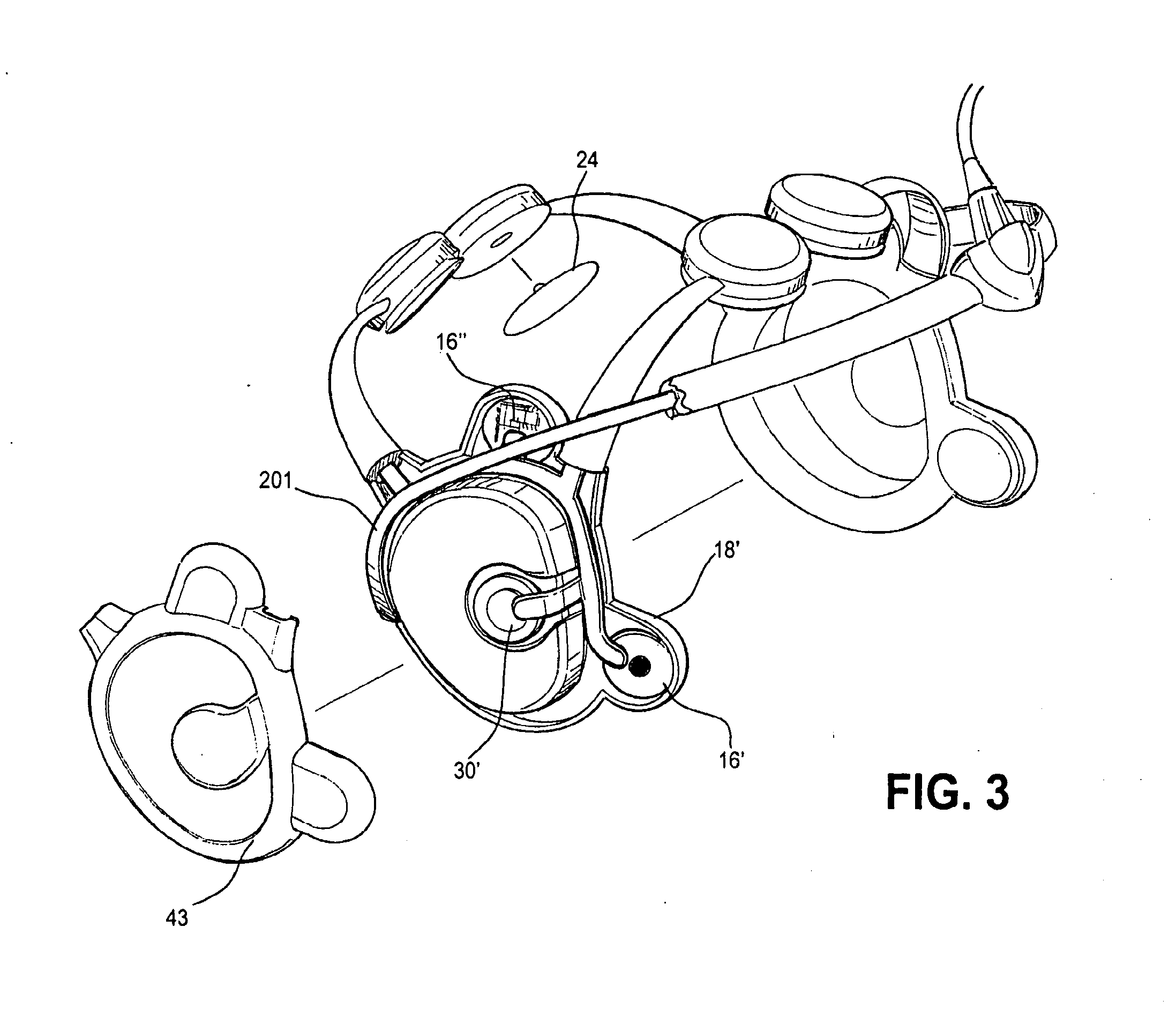Device and Method for an Automated E.E.G. System for Auditory Evoked Responses
a technology of e.e.g. system and e.e.g., which is applied in the field of methods and apparatus for capturing electroencephalogram (eeg) signals, can solve the problems of not having a beneficial direct effect on dyslexia itself, unable to achieve the effect of reducing the risk of developing a stroke, and unable to achieve the effect of reducing the risk of strok
- Summary
- Abstract
- Description
- Claims
- Application Information
AI Technical Summary
Benefits of technology
Problems solved by technology
Method used
Image
Examples
Embodiment Construction
[0034]In the drawings where like members are given the same reference numeral, in FIG. 1, an integrated Auditory Evoked Response (AER) headset 10 includes embedded features that enable clinicians to readily perform an electroencephalogram (EEG) test without the necessity of extensive training. Portability of diagnostic data taking allows use whenever and wherever desired. Economy of use is achieved by centralized processing of the diagnostic data so that a great number of headsets 10 may be used without the necessity of expensive waveform processing equipment at each location. Collecting data from many screened individuals enables enhanced and improved diagnostic algorithms to be created and implemented. Furthermore, the headset 10 includes features that speed its use while avoiding human error and the need for extensive training.
[0035]To these ends, the headset 10 incorporates a control module 12 that advantageously allows the headset 10 to be portable and to be used in a clinical ...
PUM
 Login to View More
Login to View More Abstract
Description
Claims
Application Information
 Login to View More
Login to View More - R&D
- Intellectual Property
- Life Sciences
- Materials
- Tech Scout
- Unparalleled Data Quality
- Higher Quality Content
- 60% Fewer Hallucinations
Browse by: Latest US Patents, China's latest patents, Technical Efficacy Thesaurus, Application Domain, Technology Topic, Popular Technical Reports.
© 2025 PatSnap. All rights reserved.Legal|Privacy policy|Modern Slavery Act Transparency Statement|Sitemap|About US| Contact US: help@patsnap.com



